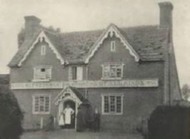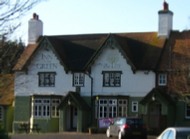

Web design © Graeme de Lande Long. Terms & Conditions.



Community Website
Scaynes Hill Village
Thanks to Graham Thompson for noting an interesting article in a 1897 newspaper, which contained a reference to the Anchor Inn, including the photograph opposite. The article was about the adoption of the Gothenburg system in Britain around that time, so a little contextual explanation is given below before reproducing the extract relating to Scaynes Hill.



The Anchor Inn in 1897
08 July Posted by Graeme de Lande Long
“ … for in the old days Scaynes Hill bore rather an evil character.”

Anchor Inn in 1897
In Victorian times drunkenness was a common feature in Britain, particularly in poorer communities presumably to drown their sorrows in what was a very unequal world. This led to the rise in the 1830s of the Temperance movement which advocated the legal prohibition of all alcohol, rather than just calling for moderation.
In Sweden, where average annual alcohol consumption had reached 34 litres of spirits per capita, domestic distillation was banned in 1855. As a result the city of Gothenburg awarded a single retail licence for spirits to a trust, with the aim of controlling consumption. The shareholders of the trust received a maximum return of 5% annually and all other profits were to be used to benefit the local community by providing libraries, museums, parks and other community facilities. The success of the system led to its spread throughout Sweden and with the passing of the Industrial and Provident Societies Act 1893 allowed its adoption in Britain, particularly in Scotland where the pubs run under the system were colloquially known as 'Goths', several still surviving to this day.
The following is an extract from the “Black& White” illustrated newspaper dated 27th Feb 1897 discussing the Gothenburg system in England, which clearly indicates that the Anchor Inn was at that time being run under those principles.

Extract from 1897 Ordnance Survey map
The Gothenburg System in England
There is a house at Scaynes Hill run by a clergyman, the Rev. Frederic Willet. But his idea of a model public house did not commend itself to the villagers, who decided to give the manager a warm reception on the day of his arrival. Consequently his appearance on the scene was deferred for a day. On his showing his face in the taproom, he was mockingly requested to favour the assembled company with a song, and to the astonishment of all he responded with a rousing ditty that put them in good humour. The features common to the houses mentioned are to be found at the Anchor, and so is the accommodation that in the summer the house is usually crowded with tourists. Intoxicants are not allowed in the club-room, which takes the place of the ordinary village reading room. The place is closed on Sunday, but a seven days' licence enables a genuine bona fide to be supplied. Perhaps the Anchor's most novel attraction is a cricket field. Here, as at the other places, drunkenness has practically disappeared. Other improvements have taken place, for in the old days Scaynes Hill bore rather an evil character.

Inn on the Green today